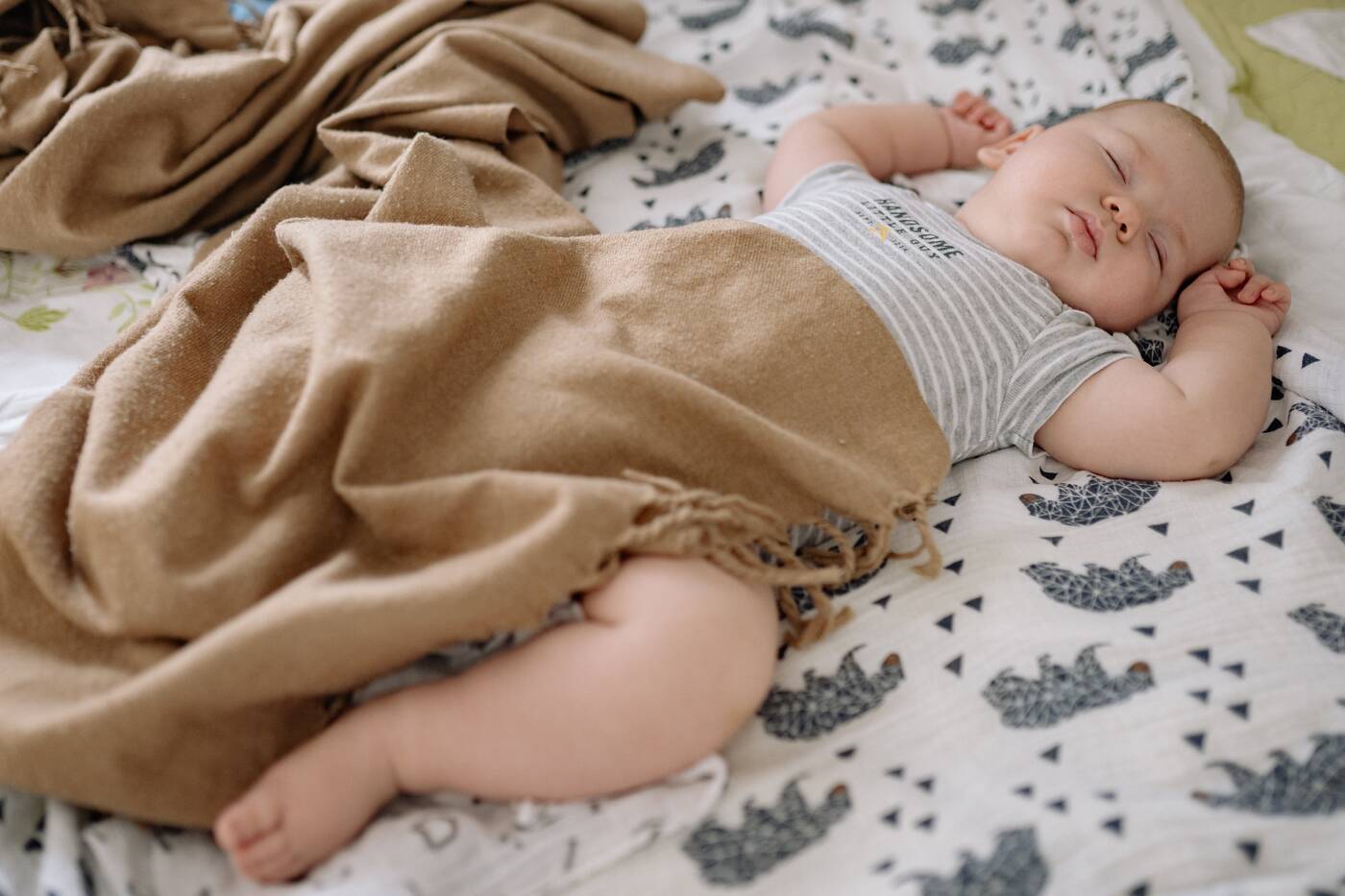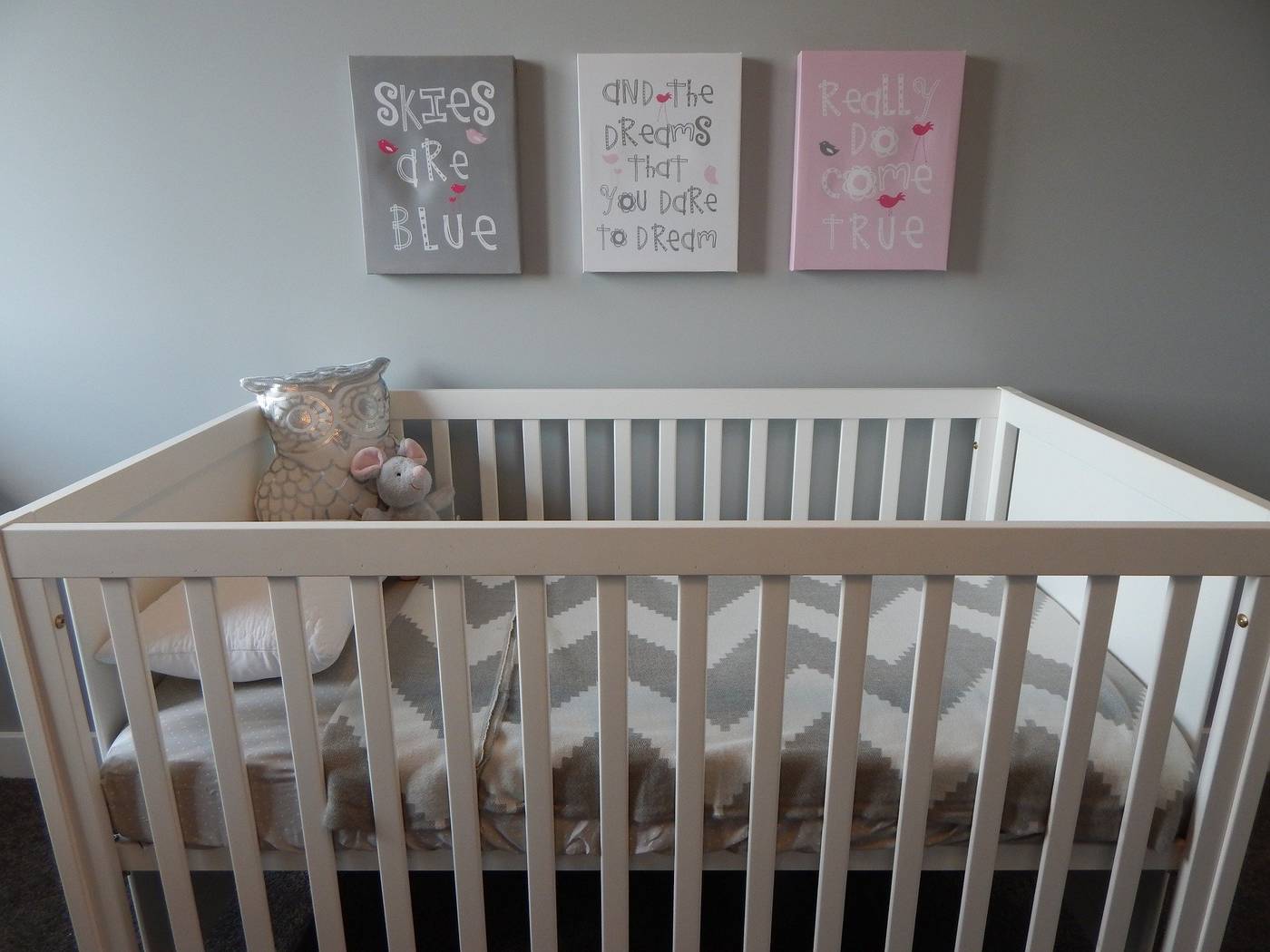Before my son was born a few months ago, I decided to take what I’d learned from soundproofing my bedroom and see if I could soundproof my nursery.
Although this may not seem like something that’s necessary, soundproofing a nursery is actually very important. Your baby will need to sleep without being woken by disturbances in the house, and it’ll also keep a baby’s cries from echoing through the house and disturbing others.
Don’t worry about not being able to hear the baby in a soundproof nursery, as you can easily install a baby monitor for this purpose.
How to Soundproof a Baby’s Room
If you’re interested in soundproofing your baby’s room, you may not know where to begin. Luckily, you’ve come to the right place! Below, I’ll share all the tips and tricks I learned while soundproofing my own nursery, so you and your newborn can be happy in a quiet space.
1. Soundproof the Door
Most interior doors are usually hollow on the inside, and because of how thin they are, they do very little to block out sound. I can guarantee that your front door will be a lot heavier and more solid than all the other doors in your house! However, getting a new door can be quite expensive, so I recommend that you soundproof your existing door instead.
What you’ll need for this project is a soundproof blanket, a door sweep and some weatherstripping tape.
You can start by using the door sweep to eliminate the gap underneath the door, while still leaving the door fully functional. The sweep will effectively keep noise out, as well as bugs, dirt, debris and anything else that’s normally able to make its way underneath. Before buying a door sweep, make sure you correctly measure the gap under the door so that you’re able to select the right size.
After you cover the gap underneath the door, the next step is to create a good seal around the door by using weatherstripping tape. One of the best types of weatherstripping tape on the market is the Kanzzy variety that has the ability to seal up doors and windows. This will allow you to keep the outdoor noise level at an absolute minimum, and keep your baby warm and comfortable at all times.
The final step is to add the sound-absorbing blanket to your door. One of my favorite blankets is the US Cargo moving blanket, and you may also be amazed at how much noise they can reduce. These can be easily tacked onto a door, or hung from the wall above the door (on a standard curtain rod).
2. Consider Soundproof Curtains
A lot of noise can pass through the windows in your home, even when they’re closed. This is especially true if you live on a busy street with lots of traffic or a train passing by each day.
To solve this problem, we recommend that you invest in some soundproof curtains. These curtains are made of heavy fabric that’ll help keep a lot of unwanted noise away from the room they’re hanging in. They come in a variety of colors, so it won’t be hard for you to find a set that matches the color scheme of your nursery.
3. Add Carpeting
In no time, your baby will be crawling, so there’s no reason why you shouldn’t add thick carpeting to your nursery floor. Carpet can contribute heavily to the sound-deadening of a nursery, and even a single rug can do the job. These materials will help stop sound from bouncing off your hardwood floor and echoing.
Aside from traditional carpeting and rugs, there are many different types of soundproofing carpets on the market, such as this one. If you don’t want to buy a new carpet, though, traditional carpeting will work effectively as long as it’s thick and clean.
4. Get a Sound Dohm
We try to do everything that’s possible to make sure our baby is comfortable. But without question, one of the most essential products we’ve purchased is the Marpac Sound Dohm. It’s a small device that produces fan noise without actually blowing any air, and it’s used to mask any outside noise so that a baby can sleep comfortably.
5. Decorate the Room and Rearrange Furniture
We suggest that you put your baby’s crib against the wall, and if you have any spare bookshelves, you can take them to the nursery and fill them with as many books and stuffed animals as you can. Placing furniture against the walls that are shared with other rooms will prevent your baby from hearing an excess amount of sound.
There are also a few more things you can do to decorate your walls, such as:
- Putting up large canvas art prints
- Hanging some pretty fabric quilts
- Adding thick wallpaper
6. Hang Soundproof Art Panels
Soundproofing foam is one of the best materials you can use to deaden the noise in almost any room, but we don’t recommend it for a baby’s nursery. First of all, it would completely block out all the noise, including white noise. Secondly, foam panels wouldn’t look appealing in the nursery.
As a result, the best option would be to use soundproof art panels. These come in a variety of colors, and they’re very easy to install, clean and maintain.
7. Soundproof the Walls
An excellent way to soundproof your nursery’s walls is to use Mass Loaded Vinyl directly on the studs, or mineral wool boards between them. Mass Loaded Vinyl is one of the best materials when it comes to blocking unwanted noise of all types. You can start by simply cutting it down to the right size, and then you’ll need to nail or screw it to the studs. You’ll likely need a friend or family member to hold the material while you attach it to the studs.
Another effective option is to add an additional layer of drywall to each wall. This won’t be as effective as adding Mass Loaded Vinyl, but you’ll still notice a big difference in the room’s noise level after adding another layer of construction material.
8. Soundproof the Ceiling
If noise is coming through your ceiling, you should consider soundproofing it. Better yet, you may be able to block the noise that’s coming from the floor in the room above your nursery (if it’s not on the top floor of your home).
If you don’t have access to the floor above the nursery, you can soundproof the ceiling by installing more soundproof art panels. These panels are usually potent enough to block airborne noise, such as music playing or people talking.
Replace Bad Noise With Good Noise
Parents need to understand that not all noise is bad for your baby. Recent studies have shown that white noise can actually have a calming and soothing effect on babies.
White noise basically refers to noise with many frequencies of equal intensity; for example, the noise produced by an air conditioner or a vacuum cleaner. However, you can easily get a stand-alone white noise machine and place it in the nursery.
The Baby Video Monitor
At the beginning of this guide, I mentioned that we use a baby monitor so we can hear our son in his room while we’re somewhere else in the house. My baby will sometimes wake up without crying, and he’ll also make some soft noises that are impossible to hear when the nursery door is closed, so I decided that getting a monitor would be the best choice. With some monitors, instead of just hearing your baby, you can actually see them, too.
Conclusion

Making sure your baby sleeps comfortably through the night is important. Keeping your baby’s room quiet will not only help keep the baby asleep for longer, but it’ll also help you get some proper rest and allow you to catch up on household chores.
Don’t put this job on hold—just follow the steps above, carefully, and you’ll be good to go.
For more information about soundproofing a room in your home, check out our guide to soundproofing a room from outside noise.
image: Pixabay; image 2: Yan Krukau

